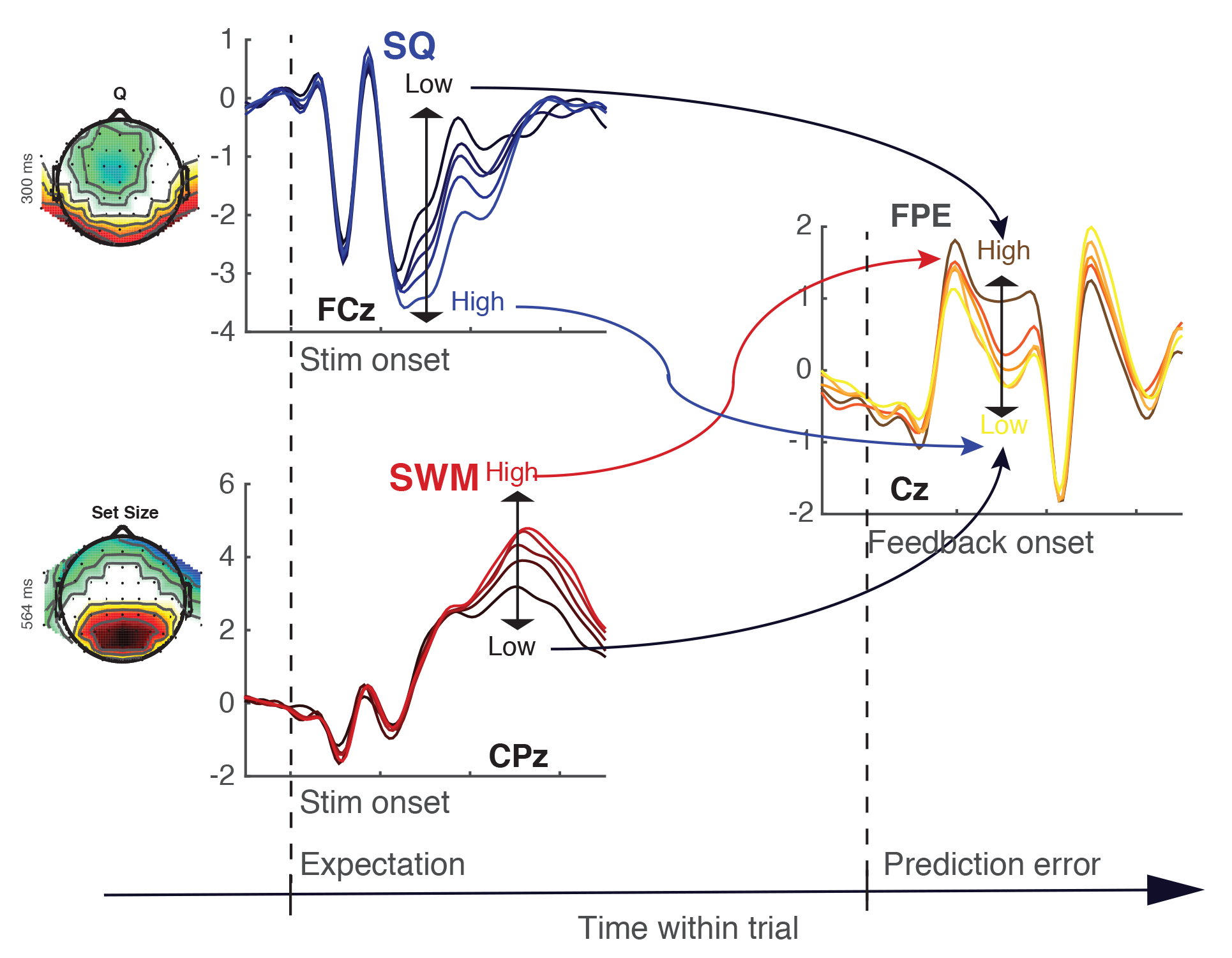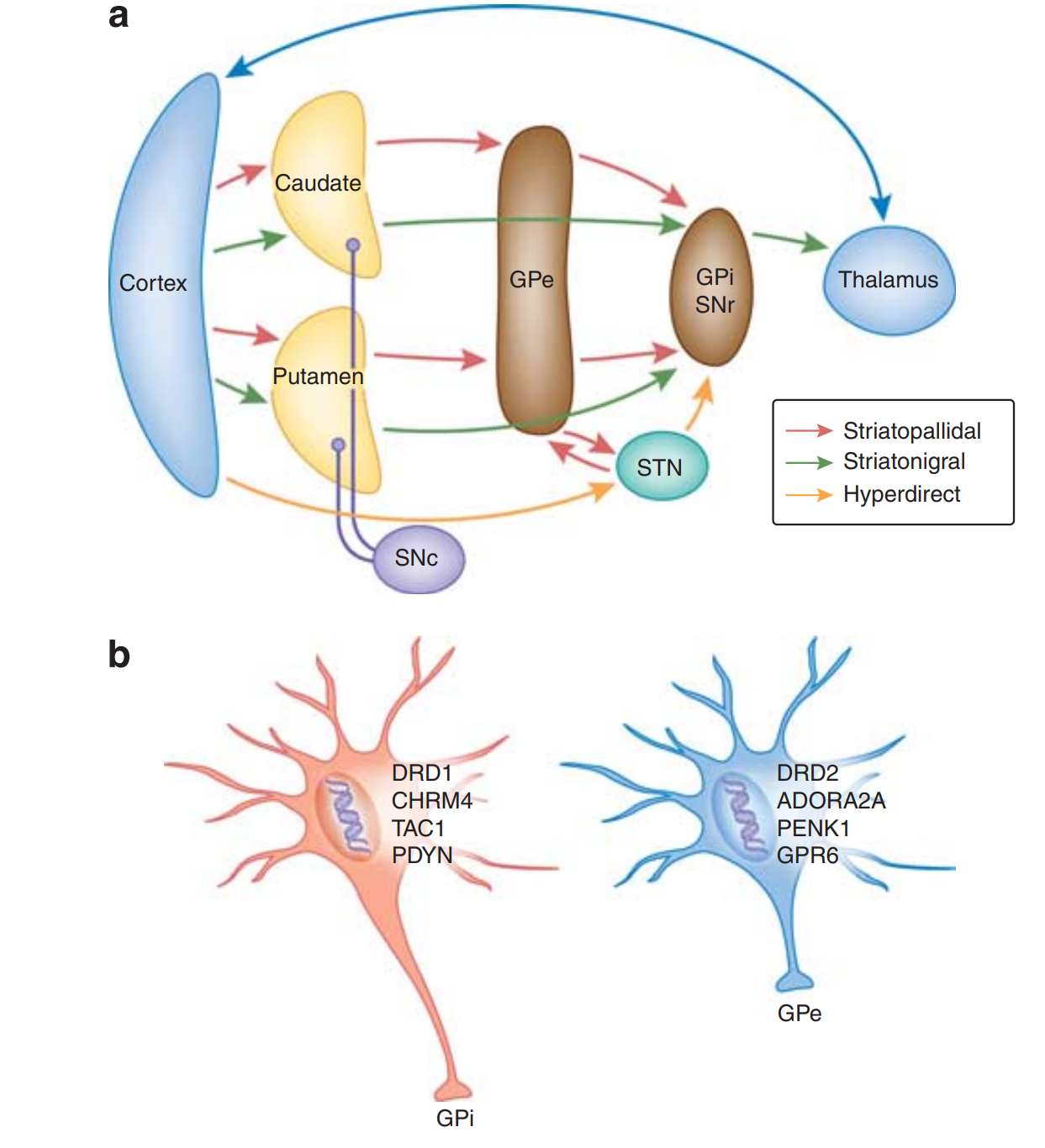EEG + GENETIC DATA COLLECTION
Electroencephalography (EEG)
Electroencephalography (EEG) is the recording of electrical activity caused by neuron firing within the brain. This activity can be measured along the scalp and used to investigate the learning and decision making processes of interest. There are many medical applications for EEG, including the diagnosis of epileptic seizures, migraines, movement disorders, and various forms of brain function monitoring. However, our psycho-physiological research utilizes EEG to conduct in-depth investigations of action potentials and oscillatory synchronization associated with corresponding neural processes in the cortex as well as other areas of the brain. When combined with machine learning analyses and computational modeling, we can extract brain signals that relate to key variables and explore how they interact within and across trials. For example, in the above image we identified separable neural markers of working memory and reinforcement learning and examined how they interact (Collins & Frank, 2018, PNAS).
Acquisition of brain activity is accomplished by using an electrode cap or net that uses a salt-water based gel or solution to create the conductive connection required for recording. These caps measure activity in frequency (Hz) ranging from 0-100 Hz.
Genetics
Genetics play an important role in the behavior of all organisms. Coupled with observations of past experience and the environment, the study of genes can provide us information about learning and decision making (i.e. performance and outcomes). Research in our lab has shown that individual differences in learning are accounted for by genetic differences in striatal dopamine (DA) genes between individuals. We have found that polymorphisms of these genes predict people’s tendency to learn from rewards or to learn from punishments. Other work has indicated that polymorphisms of prefrontal DA genes are predictive of the types of strategies people use in learning tasks.


